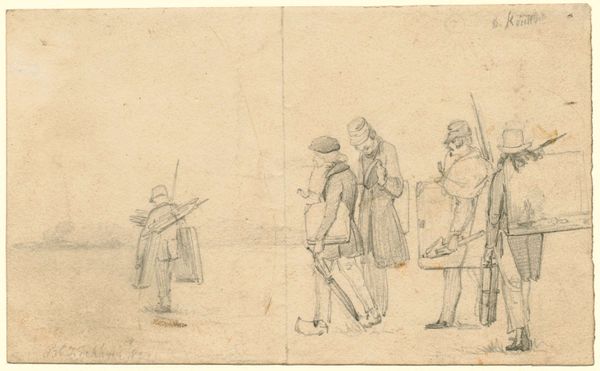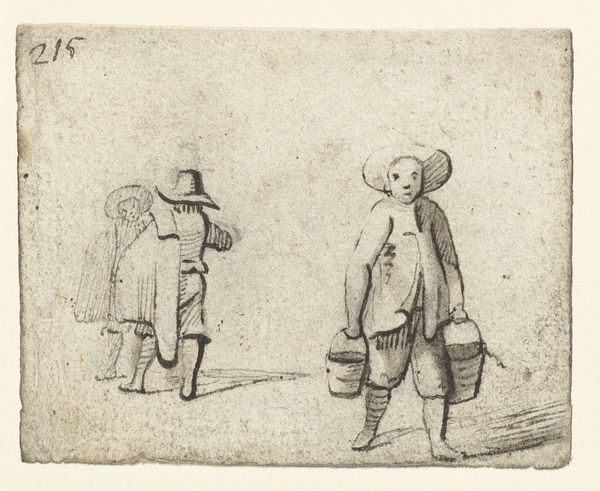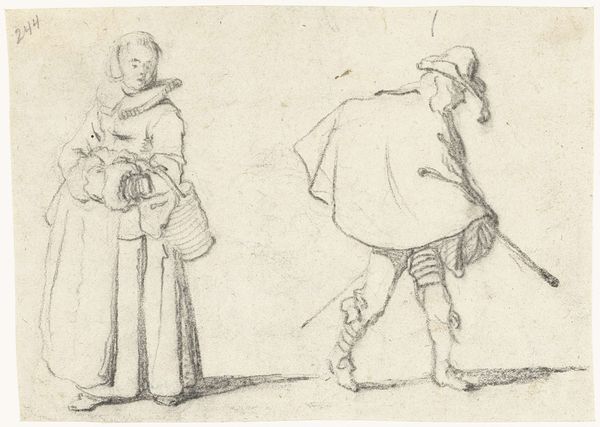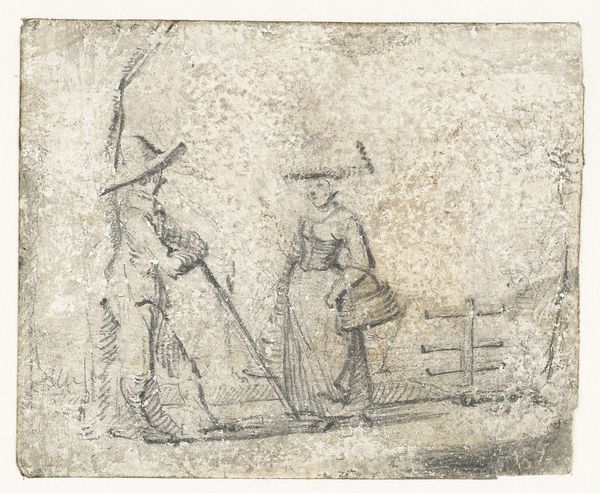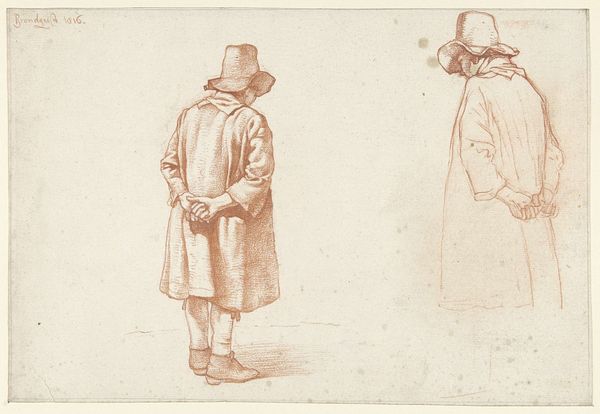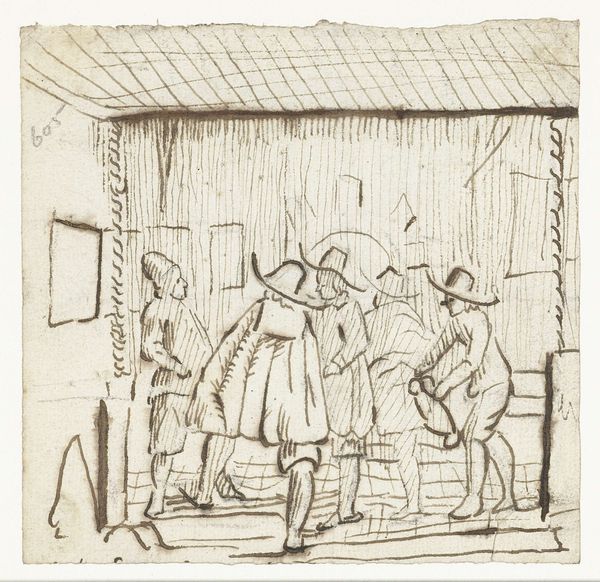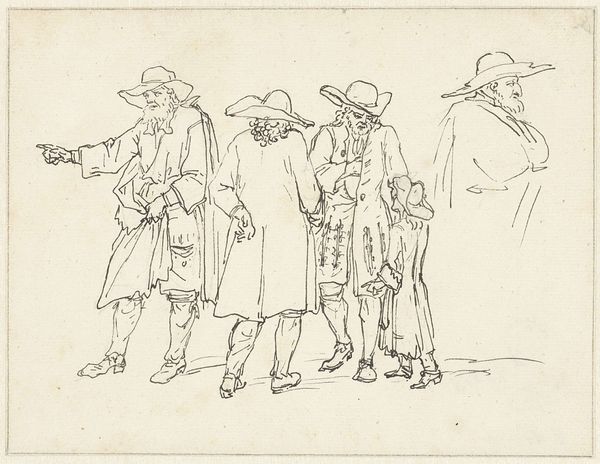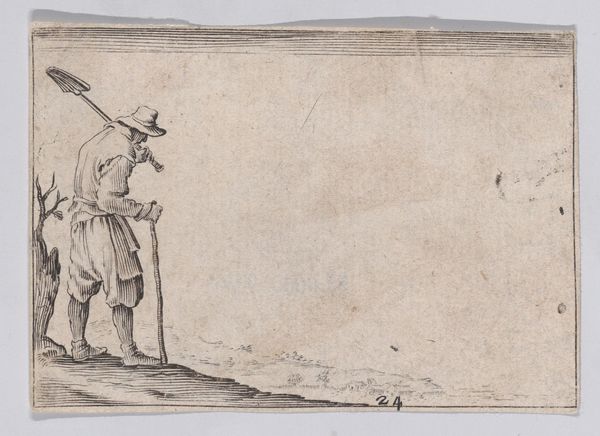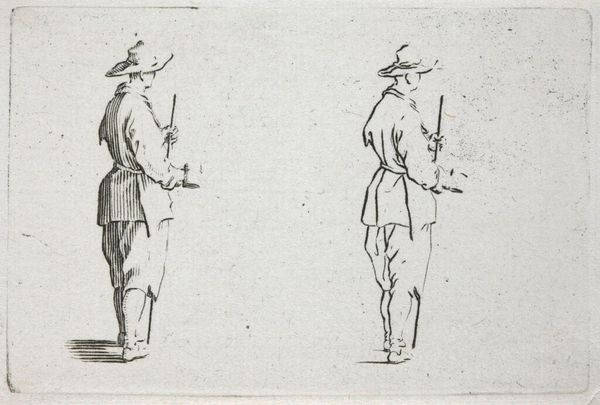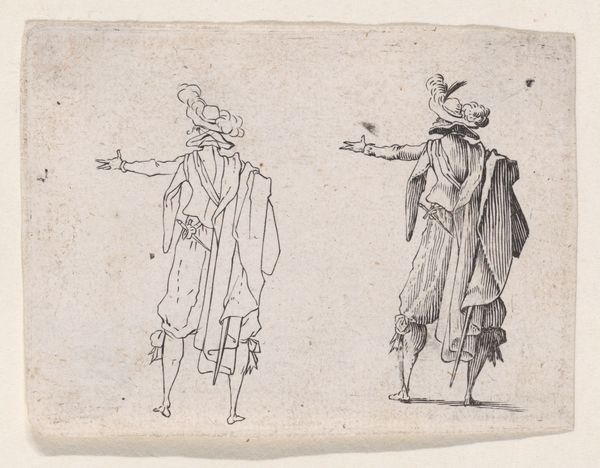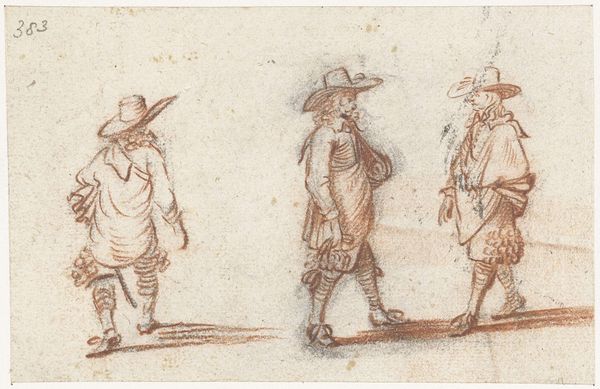
drawing, paper, pen
#
portrait
#
drawing
#
comic strip sketch
#
imaginative character sketch
#
quirky sketch
#
dutch-golden-age
#
figuration
#
paper
#
personal sketchbook
#
idea generation sketch
#
sketchwork
#
thumbnail sketching
#
sketchbook drawing
#
pen
#
genre-painting
#
storyboard and sketchbook work
#
sketchbook art
Dimensions: height 83 mm, width 125 mm
Copyright: Rijks Museum: Open Domain
Curator: Immediately, I’m struck by the tentative quality of this sketch. It’s so bare. Editor: Yes, "Three Standing Men," executed around 1653 by Moses ter Borch and currently held at the Rijksmuseum, indeed presents us with a minimalist composition. The medium is pen on paper. Curator: The figures seem so self-contained, almost isolated despite their proximity. The stark lines create a sense of…distance. It is striking how lightly they are described. Editor: Consider the context of Dutch Golden Age art; genre painting and portraiture were incredibly popular. Ter Borch’s drawing enters a cultural narrative obsessed with depicting everyday life. This sketch might serve as a study for a larger composition. It captures the fashion of the era, but not with idealizing intent; the depiction is almost critical. Curator: Indeed, the formal reduction intensifies our attention to the variations in their stance and garb, how the line of the cloaks flow around each one and relate to their relative posture. There's a compelling relationship created by their positioning, the slight lean in one figure countered by the more formal upright stance of another, and their props, their sticks almost bisect the image on the lower half. Editor: It speaks volumes about societal structures, doesn’t it? The props, swords, hats, their posturing... These aren’t mere accessories but signifiers of status and identity, especially if they belong to particular guilds, orders, or militias. I can see echoes of civic guard portraits here. They underscore a deep concern for representation. Curator: Absolutely, though its lack of surface incident amplifies the figures against the neutral backdrop, almost as specimens removed from a narrative. A potent display of their forms alone, and a dynamic expression nonetheless. Editor: Perhaps, what strikes me most is its direct engagement with questions of identity in 17th-century Holland. Ter Borch's art, viewed through its socio-historical setting, provides invaluable insights into the ways people then viewed and presented themselves to the world. Curator: I concur, this concentrated examination of line and form, even in its unfinished state, generates significant narrative weight and emotive expression. It allows the forms to speak directly to the nature of being present. Editor: A testament to how a modest drawing on paper can unveil complex societal relations from centuries ago, truly inspiring.
Comments
No comments
Be the first to comment and join the conversation on the ultimate creative platform.
